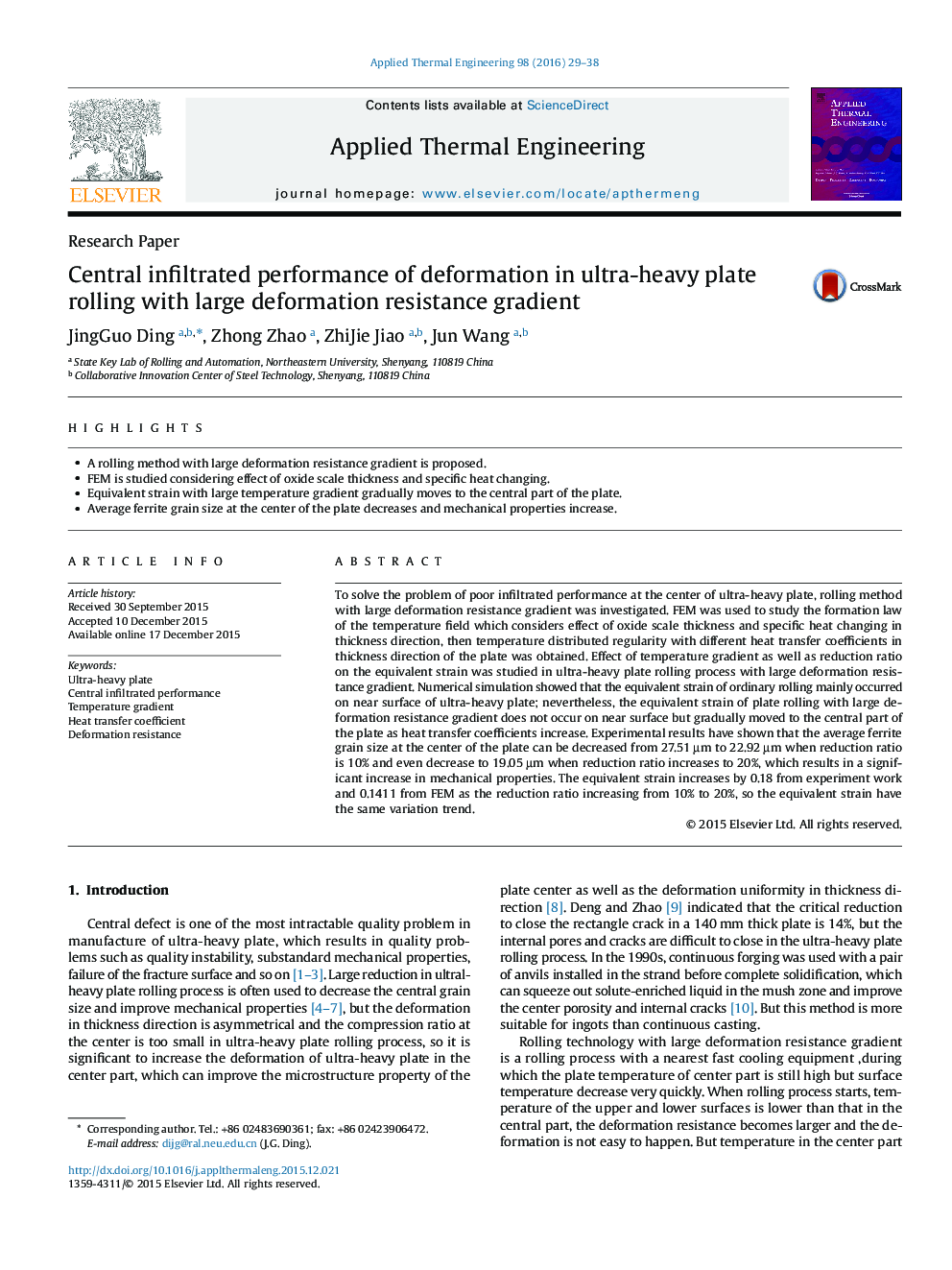| Article ID | Journal | Published Year | Pages | File Type |
|---|---|---|---|---|
| 7048294 | Applied Thermal Engineering | 2016 | 10 Pages |
Abstract
To solve the problem of poor infiltrated performance at the center of ultra-heavy plate, rolling method with large deformation resistance gradient was investigated. FEM was used to study the formation law of the temperature field which considers effect of oxide scale thickness and specific heat changing in thickness direction, then temperature distributed regularity with different heat transfer coefficients in thickness direction of the plate was obtained. Effect of temperature gradient as well as reduction ratio on the equivalent strain was studied in ultra-heavy plate rolling process with large deformation resistance gradient. Numerical simulation showed that the equivalent strain of ordinary rolling mainly occurred on near surface of ultra-heavy plate; nevertheless, the equivalent strain of plate rolling with large deformation resistance gradient does not occur on near surface but gradually moved to the central part of the plate as heat transfer coefficients increase. Experimental results have shown that the average ferrite grain size at the center of the plate can be decreased from 27.51âµm to 22.92âµm when reduction ratio is 10% and even decrease to 19.05âµm when reduction ratio increases to 20%, which results in a significant increase in mechanical properties. The equivalent strain increases by 0.18 from experiment work and 0.1411 from FEM as the reduction ratio increasing from 10% to 20%, so the equivalent strain have the same variation trend.
Related Topics
Physical Sciences and Engineering
Chemical Engineering
Fluid Flow and Transfer Processes
Authors
JingGuo Ding, Zhong Zhao, ZhiJie Jiao, Jun Wang,
